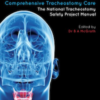Ketamine: A Review of an Established Yet Often Underappreciated Medication
apsf.orghas proven to be a complex medication with unusual properties, heterogeneous, interconnected mechanisms, and diverse, sometimes contested, clinical uses.
Ketamine’s story begins in 1956 when scientists identified a new class of anesthetic medications called cyclohexaylamines.
The first of this class of medications was called phencyclidine (PCP). In 1962, a new compound was discovered (CI-581) that possessed all of the positive qualities of PCP without major negative side effects such as severe excitation and profound psychosis.
This new medication would eventually be called ketamine.
In its initial study, several subjects who received ketamine described feeling as though they had “no arms or legs.”
Others felt “like they were dead” and experienced vivid hallucinations. These descriptions led researchers to coin the term, “dissociative anesthesia.”

















